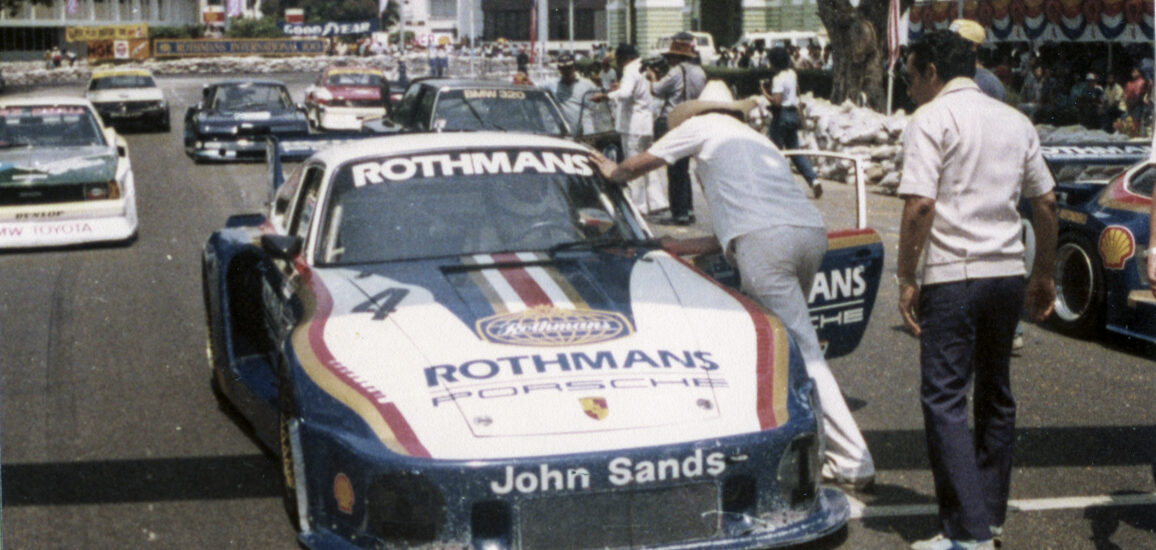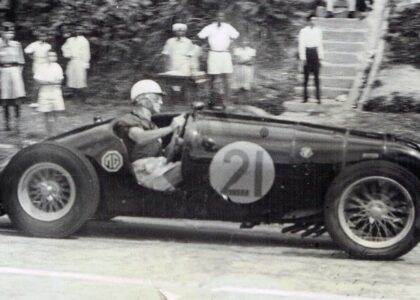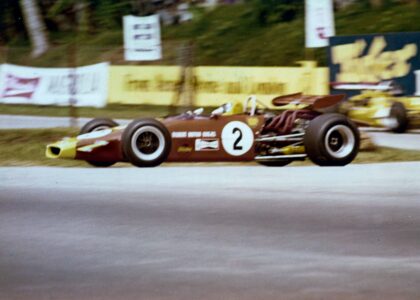Super saloons & the Silhouettes – Part 1: The 1983 Season
By the end of the 1983 South East Asian racing season, the Formula Pacific/Atlantic single-seater as the main draw card was over. Attendance at the Malaysian, Selangor and Penang Grand Prix had dwindled, as had race entries, and international safety regulations had just about eliminated the Penang Grand Prix. Costs too had skyrocketed and a fresh approach was desperately needed. The organisers of the Macau Grand Prix quickly adapted – a shift from Formula 2 to Formula 3 was a brilliant move that not only worked, it firmly established Macau’s credentials as the Grand Prix of choice for budding Formula 1 hopefuls. The Malaysian organisers adopted a totally different approach.
HEAD WINDS: It all came to a head in April 1983 at the Malaysian Grand Prix. Spectators weren’t interested in watching a ground-effects procession dominated by a couple of international drivers. On the flip side, German saloon car ace Hans-Joachim Stuck had been roped in by local BMW distributor in Malaysia BMW Concessionaires to showcase the company’s supercar, the straight-six 3.5-litre 470bhp JPS-livery fibreglass BMW M1. Now that was something the paying spectator and the journalists covering the sport in the region could easily identify with.
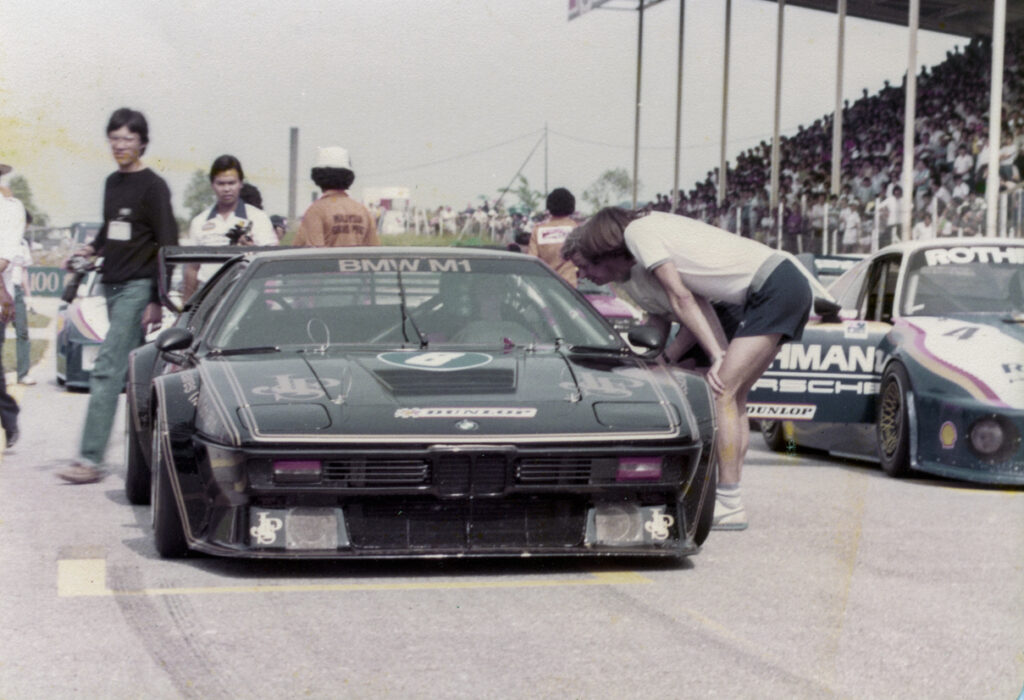
When Group 5 rules were changed in the late 1970s, manufacturers such as BMW had to act quickly to mitigate matters for their top end sports cars. By a stroke of genius, a series known as the BMW M1 Procar Championship was created by BMW Motorsport’s head, Jochen Neerpasch. The series pitted professional drivers from the Formula One World Championship, World Sportscar Championship, European Touring Car Championship, and other international series against one another using identically modified BMW M1 sports cars. The races were held as support races for various European rounds of the 1979 Formula One season, with Formula One drivers earning automatic entry into the Procar event based on their performance in their Formula One cars. BMW chose not to continue the championship in 1981, to concentrate on the company’s foray into Formula One. That’s the backdrop to the BMW M1 in Europe. Out in the Far East, things were a little less structured and far more laissez-faire when it came to motor sports.
THE GREY LINE: So what do you do with out dated racing saloons and GT cars in Europe and a global recession that was taking root? Send them cars off to the antipodes, of course, often via Hong Kong. Why Hong Kong? Because the Macau Grand Prix each November was the culmination of that year’s racing season and racing cars, like horses, would have to be put out to pasture. In a nutshell, that is the reason cars such as the Ford Escort Zakspeeds and Schnitzer BMW 320s ended up East.
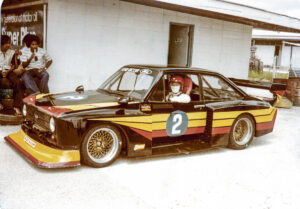
Let’s get back to 1983, via a slightly circuitous route. Mining Engineer, Jazz musician and racing enthusiast Ian Grey had been living in the Far East since the early 1960s. He `began racing in Malaysia in 1972 after acquiring a Porsche 911S. Soon after, he acquired a Ford Falcon GTHo. The 911S was upgraded – the 2-litre motor was replaced to a 2.4-litre and finally by a Carrera 2.7-litre motor.
Ian also flirted with the ex-Schollum Brothers Chevron B20 for a few years, alongside his second generation V8 Chevy Camaro, both identifiable by the black Tractors Malaysia paint scheme (the company were Caterpillar heavy equipment distributors). The Camaro was taken to Macau for the Guia 100 in November 1978 before Ian and his cars moved to Western Australia.
He returned to Malaysia in 1980 and was seen testing the Rothmans Zakspeed Escort – the Gp2 car that had been raced by Kenny Lee earlier – on 22 May 1980, ahead of the 24-25 May Malaysian Grand Prix. A deal was struck and the Rothmans car went to Ian for something in the region of Malaysian $30,000, just under half the price of an imported new BMW 3-series. When the Gp2 Escort was damaged in a fuel leak fire during warm-up for the May 1981 Penang Grand Prix, a few urgent calls were made to the Rothmans people in Petaling Jaya and a deal was struck to acquire the Gp5 Zakspeed Escort from Rothmans for the following weekend’s racing at Shah Alam. Ford man Harvey Yap revealed that the car was no longer competitive so would have been surplus to Rothmans Malaysia’s inventory of racing cars. Ian now had both the Gp2 and Gp5 Zakspeed Escorts and made his debut in the Gp5 car at Malaysian Grand Prix at Shah Alam a week after his Penang debacle with the Gp2 car (which was soon dispatched to Perth). His weapon of choice would now be the ex- Armin Hahne/Harvey Yap Gp5 Zakspeed Escort. In fact, Ian raced the car in Macau in November 1982. And that’s probably where he struck a deal for yet another Gp5 car. Does any of this make sense yet?
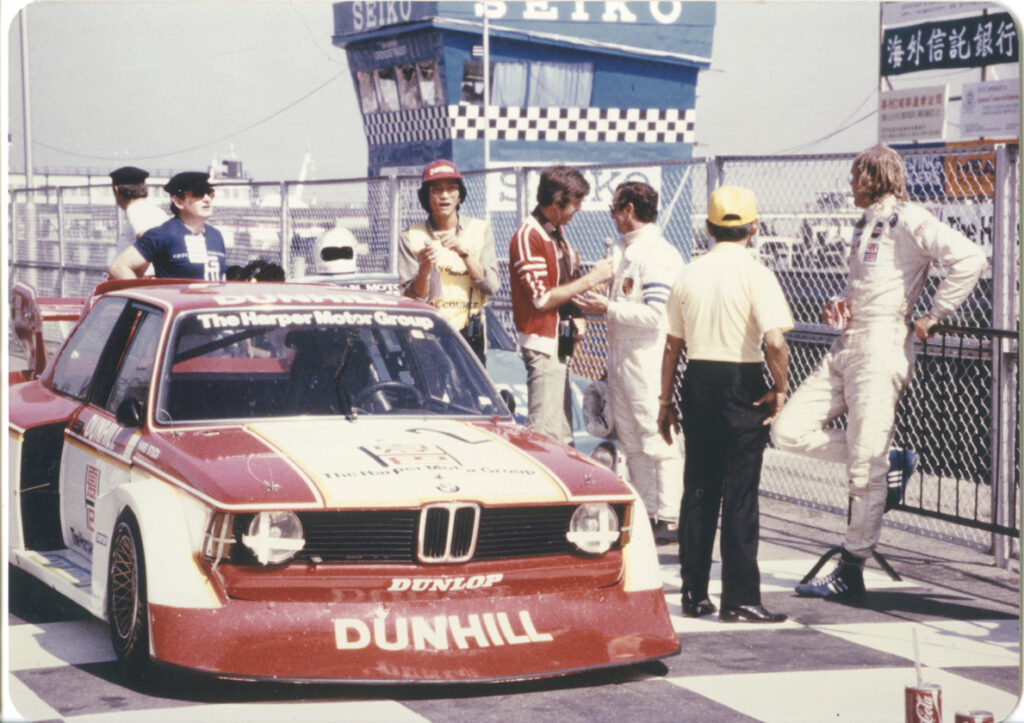
Ian acquired the Hans-Joachim Stuck 1980 Macau Guia winning Gp5 BMW 320i, the #2 car Harper Motors sponsored (with Dunhill livery) for the 1980 Macau Grand Prix Guia race. There’s a good chance it had been laid up at Bob Harper’s garage in Hong Kong after the 1980 races. Ex-stock was never popular amongst the Hong Kong cognoscenti but out in South East Asia there were enough interested parties to ensure a ready take-up of such cars. Plus, Malaysia had a permanent circuit at Shah Alam (Batu Tiga) and a season of at least three major Grand Prix race weekends – the Selangor and Malaysian Grand Prix at Shah Alam, and the Penang Grand Prix in George Town, Penang. Ian add the BMW to the stuff he already had sitting in Perth!
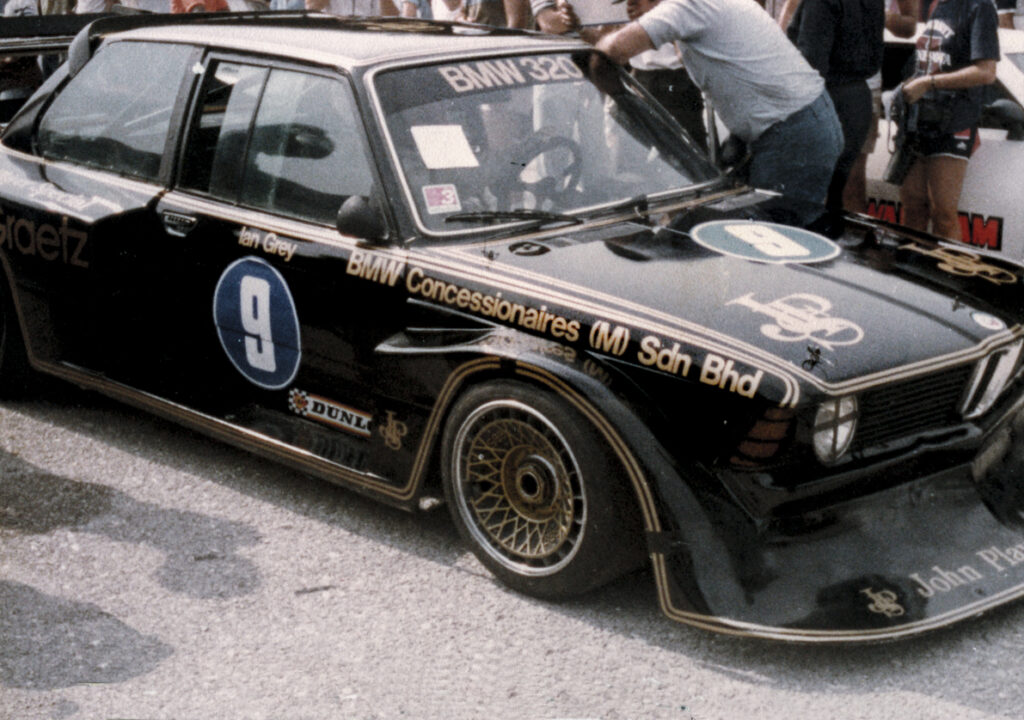
BACKGROUND: In Europe, Group 5 rules were altered for the 1983 season. Remember the battles between the Albert Poon/City Motors Alfa Romeo GTA/GTAm, the Harvey Yap Ford Escort BDA and Takahashi Datsun SSS in Malaysia in the early 1970s? Those were the first generation of “Special Touring Cars” that were raced in that class up to 1969 in Europe. In South East Asia they were categorised as Improved Touring Cars.
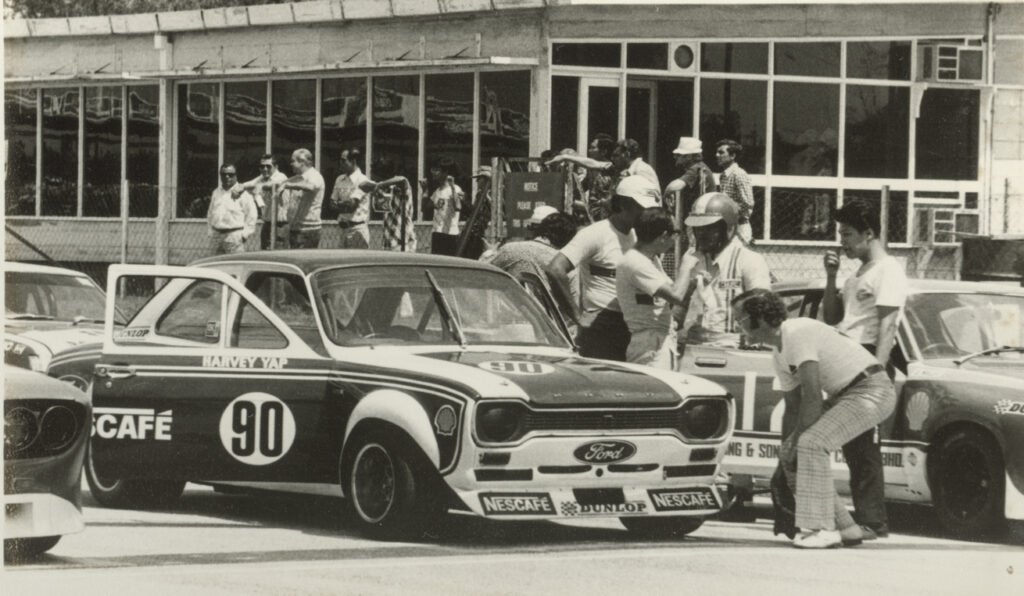
From 1976, the Europeans were on to the fourth generation of Group 5 “Special Production Cars”, wonderful rules that gave manufacturers and teams allowance for extensive mods to production-based cars homologated in Group 1 through 4. That meant ultra wide wheel arches and extravagant styling which was evident in the Porsche 935, BMW 320i Turbos, BMW 3.0 CLS, BMW M1, Toyota Celica LB Turbos, Toyota TOM’s Corolla G5, Nissan Skyline RS Silhouette, Mazda RX7, Lancia Beta Montecarlo Turbo, Ford Escort Zakspeed and Capri and others. When Group 5 was banished from 1983, some of these cars found their way out of Europe (if they hadn’t already), and were raced in Japan and the IMSA GTX in America. And South East Asia, through the customary detour via Macau. Australia had its own set of rules and it own tribal wars so doesn’t feature here.
BIG BANG: Back to our story. So in April 1983, there were three JPS-livery BMWs entered for the 1983 Malaysian Grand Prix – a 3.5-litre M1 from West Germany, the Ian Grey Gp5 320i (John Player Special gold/black replaced the Dunhill livery), and a 290bhp 535i for Malaysian saloon car specialist Kenny Lee. The 535i was entered by Eddie Koay of BMW Concessionaires Malaysia. The M1 and 320i were in the Super Saloons race while the 535i was in the Limited Formula event, one of its last outings before it was bumped up into the Super Saloons group due to capacity regulation changes in the Limited Formula group.
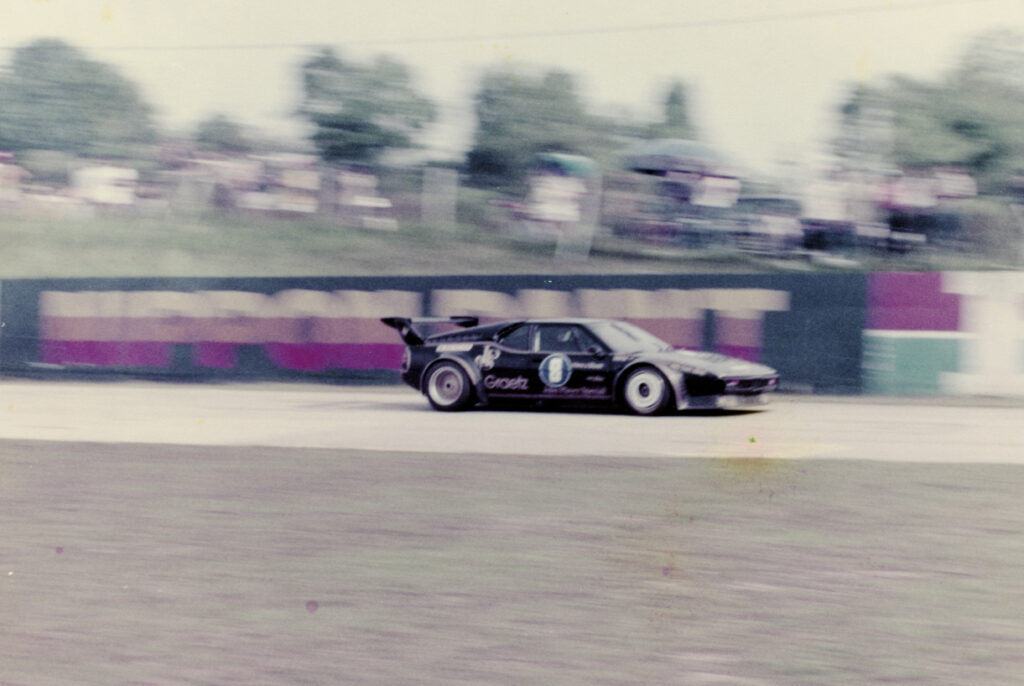
The M1’s first Asian visit came equipped with experienced driver, Hans-Joachim Stuck, and BMW’s technical advisor, Karl “Charly” Lamm. Stuck was already known entity in both saloon car racing as well as in Formula 1, having raced with March, Brabham, Shadow and ATS while Lamm was well-connected with both BMW and Schnitzer Motorsport, and was the half-brother of Josef and Herbert Schnitzer.
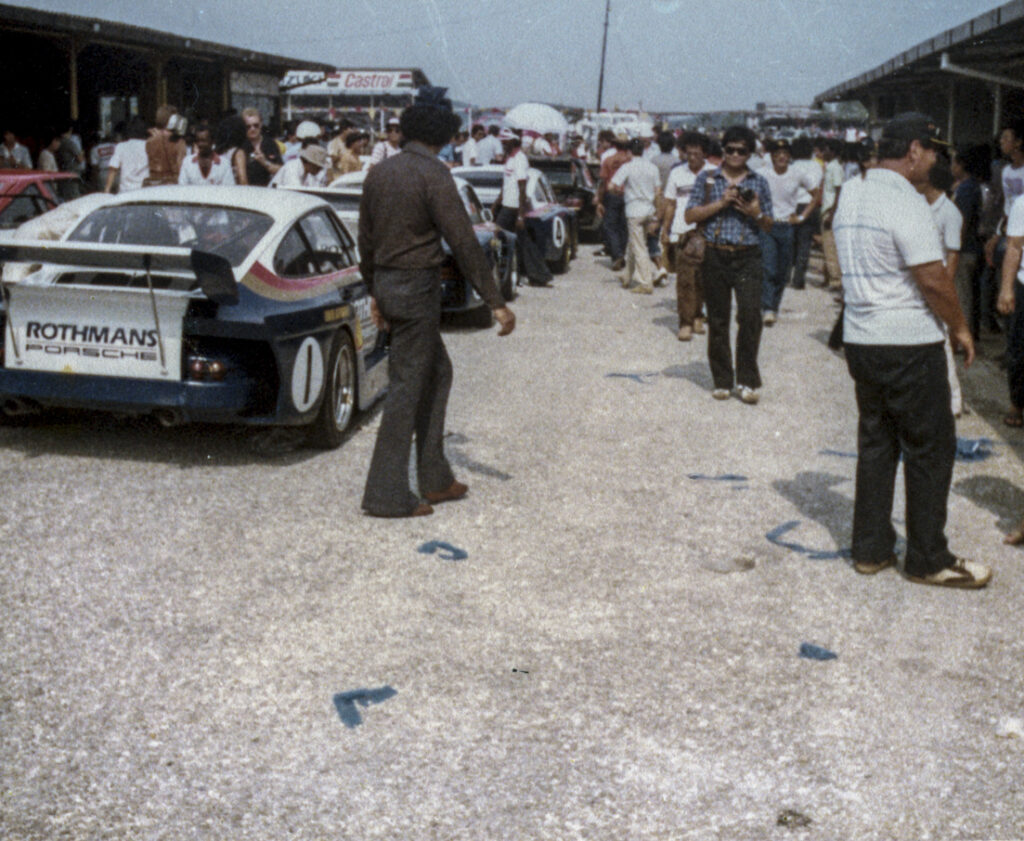
That 1983 Super Saloons race wasn’t dominated just by BMW. Australian Rusty French was entered in his Rothmans-livery Gp5 slant nose 650bhp Twin Turbo Porsche 935 RSR. The car was managed by Alan Brown and had been raced by former Formula 1 champion Alan Jones in Australia earlier and already had a proven track record. What a tantalizing prospect it was – a Schnitzer-tuned BMW M1 against the mighty Porsche 935 twin turbo at Shah Alam in April 1983, followed by the Penang Grand Prix the following weekend.
Added to that was Harvey Yap’s return (William Mei had been considered for the drive as well) from retirement (Harvey always said it was never a retirement, but a case of not having a suitably competitive car to race) – this time not in his famous Gp5 Zakspeed Escort but for the Forari Automobile Sdn. Bhd. Rothmans-Porsche Racing Team. Forari Automobile Snd Bhd. Forari had been established in 1976 and were supercar importers looking at making a high-profile impact on the local racing scene. A single normally-aspirated 3.2-litre 935 RSR entry wasn’t going to cut it. They also entered a second Atmo slant nose, for Hong Kong-based Helmut Greiner. Greiner, a Porsche 935 driver, already had Macau experience from 1980, finishing the Guia race in second place after starting in 10th place in his #16 Vivitar-Porsche 935 RSR. The car he had for Malaysia in 1983 was his Team Viceroy 3-litre Porsche Carrera RSR, the car he raced to victory in the 1982 Macau Guia 100 race. In fact, there were two Team Viceroy RSRs in Macau in 1982, the #1 car run by Helmut Ristl and the Greiner car. Both cars set equal FTD. Was the Ristl RSR the car that would be delivered to Harvey Yap for the 1983 Malaysian season? Just speculating.
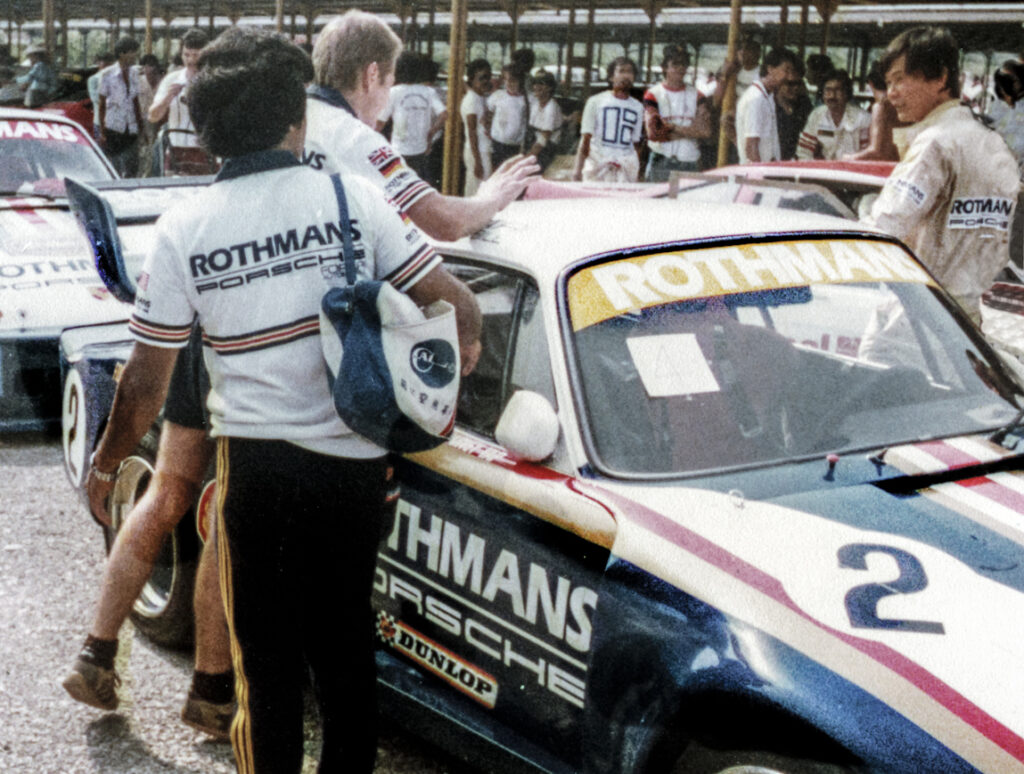
HOME FRONT: The two key players in the Malaysian saloon racing scene were Harvey Yap and Ian Grey. There were others of course – William Mei, Kenny Lee, Zul Hassan for example – but the sharp end of the grid belonged to Harvey and Ian. Harvey had been out of action following his last race at the Macau Grand Prix in November 1980 in the Gp5 Zakspeed Escort. Rothmans Malaysia had loaned the car for the Guia and Feoso Oil races, which explains why the #3 car had Dunhill/Harper Motor Group/Sime Darby Group livery. The Harper Group, by now fully owned by Sime Darby, had franchises for Alfa Romeo, BMW, Ford and Mitsubishi in Hong Kong. It was Harvey’s first foray to Macau and he finished 6th in Macau Feoso Oil race. The Guia saloon car race was won by another Harper entry – Hans-Joachim Stuck in the Gp5 BMW 320i (E21). Ian, meanwhile, was having fun in the Gp5 Zakspeed and had already bagged a win in the car in the December 1982 Selangor Grand Prix, winning the Super Saloons race (15 laps) and setting FTD, albeit against a grid consisting of regional racers such as Ahmed Khan (Toyota Corolla) and Andy Bryson (Davrian IMP). Still, a 1:31.5 lap around Shah Alam was a very respectable time.
GETTING STUCK: The Super Saloons event for the 1983 Malaysian Grand Prix was only race for that category and was held on Saturday 23rd April. Was this the real crowd puller? The grandstands were full – on a Saturday! Suffice it to say, this wasn’t a procession that spectators had come to expect in the single-seaters. On the contrary, the M1 had a point to prove in Stuck’s hands, against much fancied twin turbo 935 RSR of Rusty French, whose invitation to race at Shah Alam was very last minute.
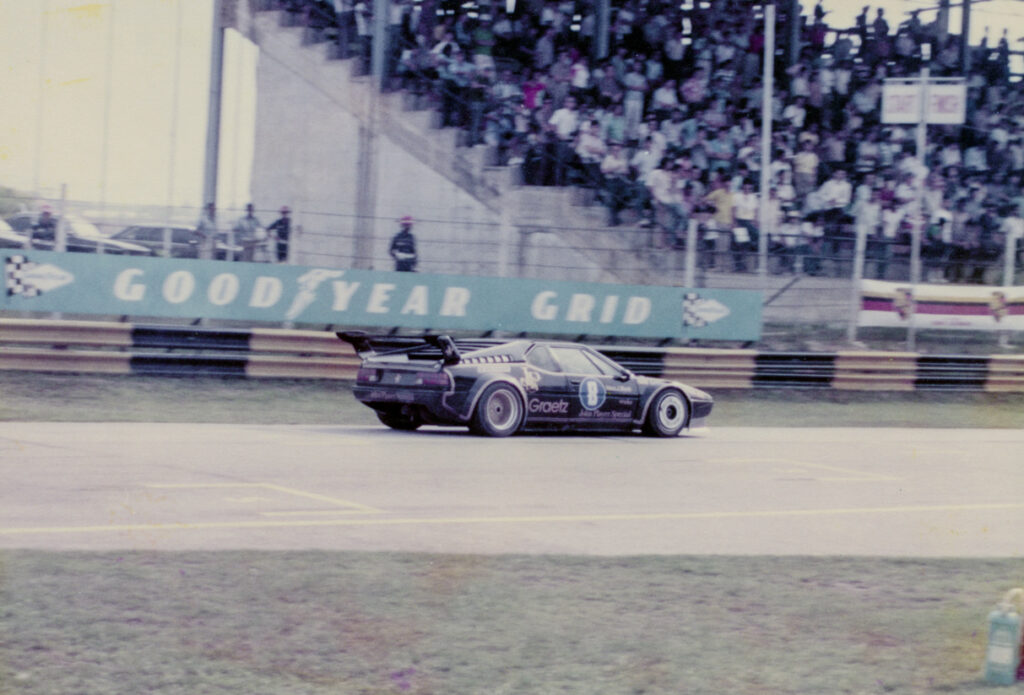
The first few laps were close but Stuck pulled out a clear lead after lap 5, once French’s brake fluid boiled over, and never looked back. His fastest time was 1:25 but it was French who set FTD (lap 3) with a 1:24.1, a new Shah Alam lap record, beating Armin Hahne’s 1978 time set in the Gp5 Zakspeed Escort by over three seconds. With the brakes sorted and 400 lbs lobbed off the car, French figured he could drop the lap record down to 1:18! Greiner only completed 13 laps of the 25 lap race while Harvey came to grips with his Rothmans 935 Atmo, a vastly different car to his Gp5 Zakspeed Escort. The top four finishers were: Hans-Joachim Stuck, Rusty French, Kiyoshi Misaki (Toyota Corolla 2000) and Harvey Yap.
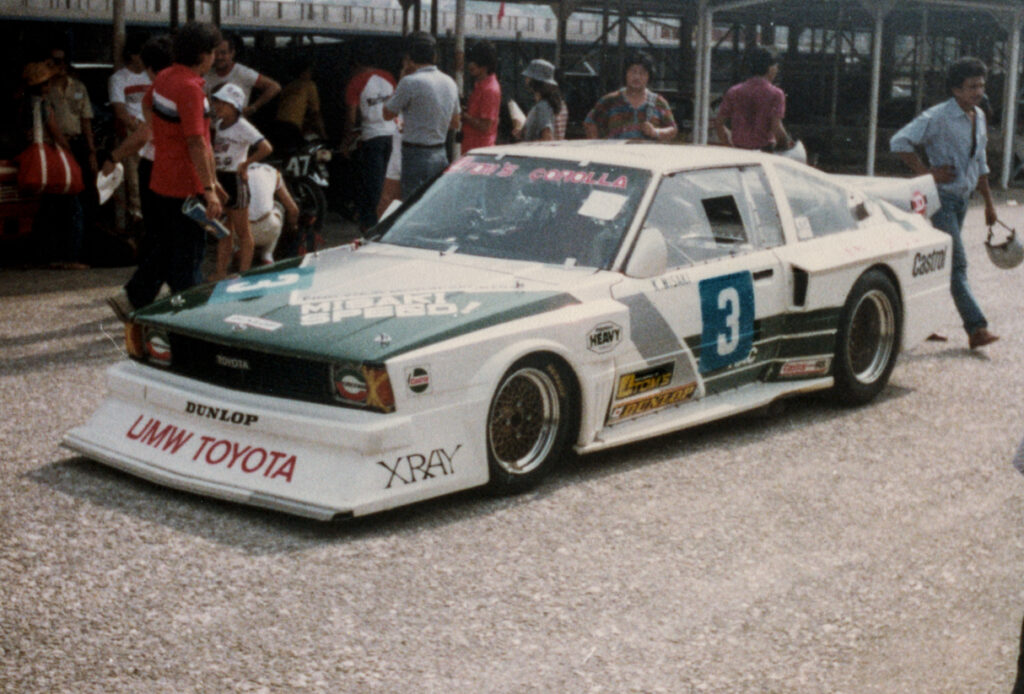
The single-seaters were well and truly passé at Shah Alam even though it wasn’t a light grid consisting of the big guns in Ralt RT4s: Greame Lawrence, Robert Handford, Geoff Nicol, Bob Creasy and Andrew Miedicke. The Asians presence was even less this time but there was one odd entry – Indonesian Chandra Alim in a 1.3-litre Toyota-engined prototype Bellco (a little known Japanese constructor based in Yokohama) that was destined for Tinton Suprapto’s Indonesia racing school. Handford won ahead of Nicol, Creasy and Miedicke. The fact of the matter was that the spectators just could not relate to these ground effect cars.
SILVER LINING: Part of the problem that was starting to affect the outer fringes of the sport was the economic downturn that was triggered by high US interest rates and the impending collapse of world commodity trade. The Malaysian budget deficit (as a percentage of GDP) reached a historical high of 18% in 1983 and public debt was rising sharply. The Ringgit, then pegged to the US$, was appreciating, which may have in some way benefitted the automobile distributors in Malaysia – and allowed likes of Eddie Koay to enlist drivers such as Han-Joachim Stuck and Willi Siller. But that’s for the macro guys to write about.
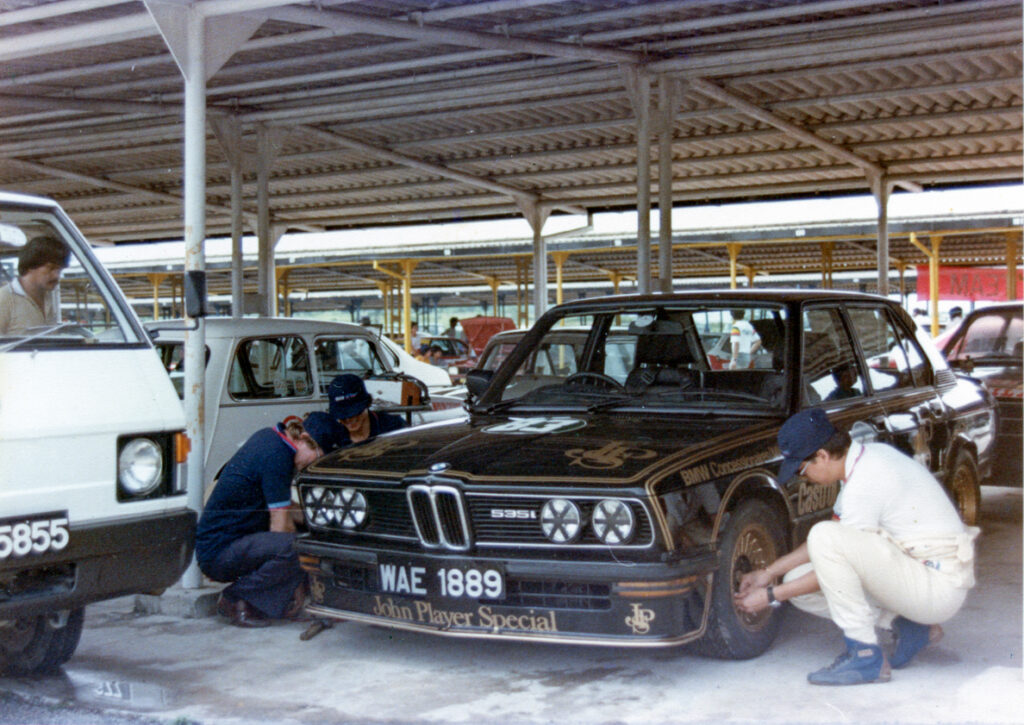
WEEKEND RETREAT: The circus made the journey over to Penang immediately following the Shah Alam races and were met with a organisation with an albatross around its neck. This would be the final year that Penang was allowed to host an international event – the FIA had stipulated that from 1984 it had to have a permanent circuit or that Armco barriers had to be used instead of sand bags. End of that era of street Grand Prix racing in South East Asia. From 1984 it would simply be called the Penang Circuit Races.
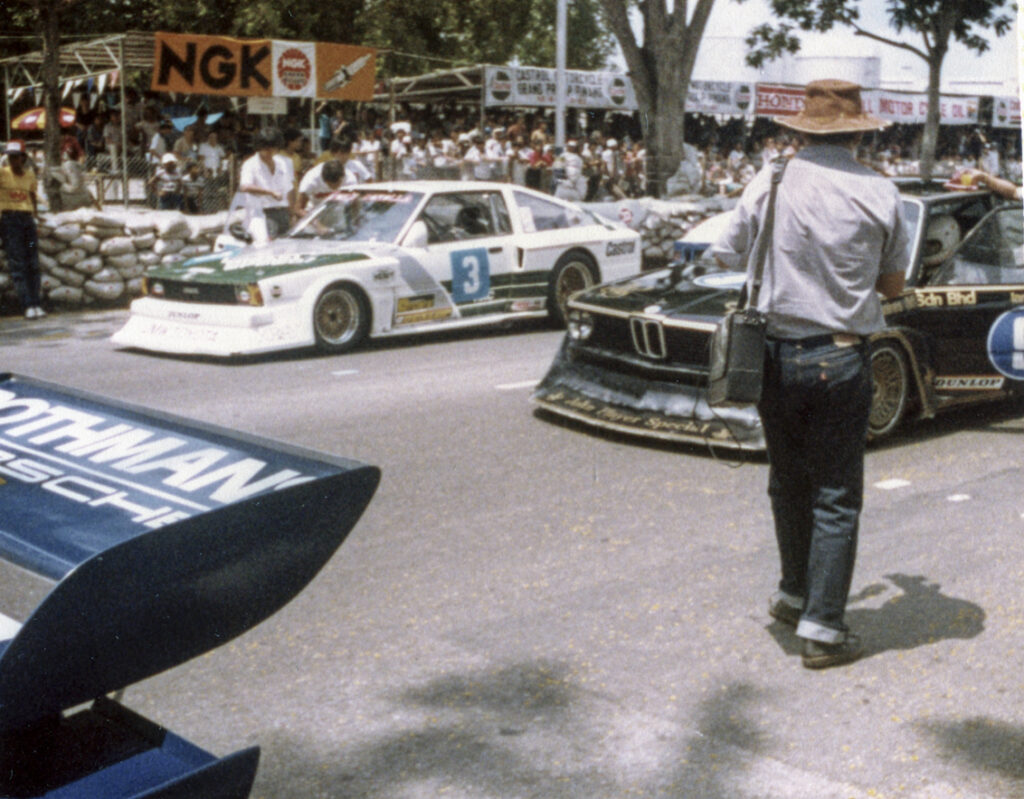
There were a few key changes to the driver line-up for the Super Saloons class. Kiyoshi Misaki’s seat in the 2-litre TE71 Corolla went to Nobuhide Tachi, the T in Tachi Oiwa Motor Sports, otherwise better known as TOM’S. The tuning company had been established in 1974 by Nobuhide Tachi and Kiyoshi Oiwa so it was quite important for Penang to have a TOM’S Gp5 Toyota Corolla entered, and even more so that Tachi was to drive the car.
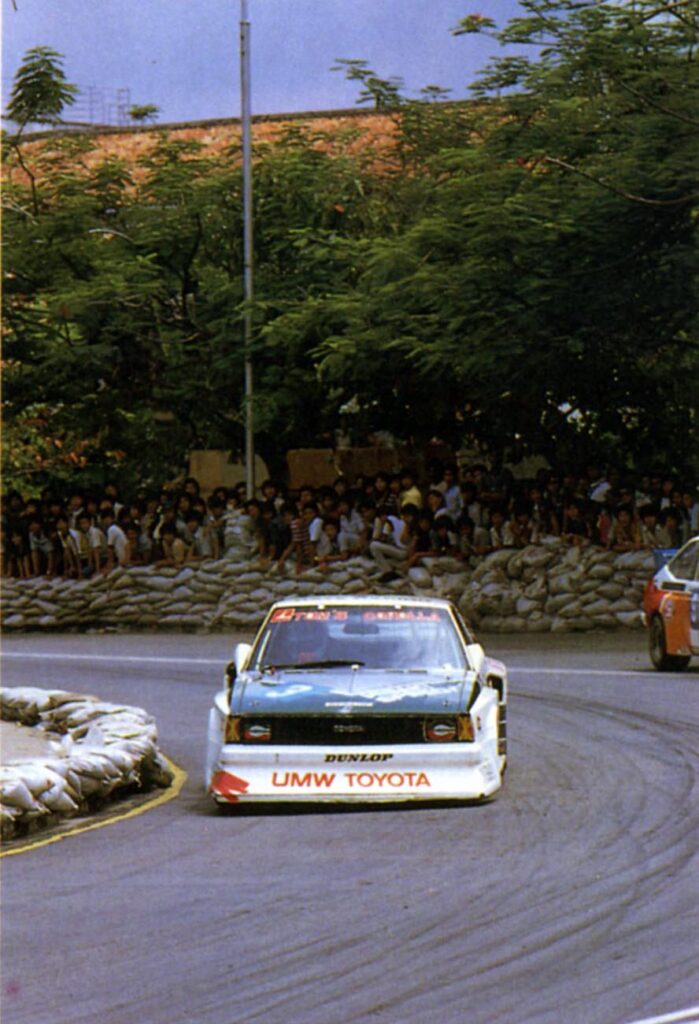
BMW Concessionaires too had a change of driver – Stuck’s seat going to relatively unknown 34-year-old Austrian Willi Siller as Stuck was contracted to drive for Schnitzer in a BMW 635 CSi in the Donington 500km race on 1st May. Siller, a four-time Austrian champion in the late 1970s, had been racing since 1973 and was a test driver for the Schnitzer Racing Team and had M1 experience since 1980. Ian Grey was coming to grips with his 310bhp 320i. The Rothmans Porsches remained the same – Harvey Yap and Helmut Greiner in 935 atmos. Rusty French had his twin turbo 935 over in Penang as well. Imagine that, a rear-engined twin turbo at 1.4 bar boost putting out 750bhp at close to 8000rpm gunning around Penang’s tight street circuit for twenty laps. The results bore it out with local hero Harvey Yap winning (FTD set at 1:02.0) ahead of Tachi, Ian Grey, Zul Hassan (Toyota Levin 1.6-litre) and Filipino Louie Camus in the Toyota Celica-Elfin 2TG 2-litre. Casualties included some sandbags, Rusty French (brakes), Helmut Greiner and Willi Siller. First Greiner whacked the sandbags in practice, then the fuel injection drive belt failed early into the race (while leading) and Siller did some ghastly damage to the M1’s left front end at the in the race. The photos in this article attest that – Siller complaining that Rusty French had bumped him off into the sandbags but knew that the bumpy street circuit did not suit the hard suspension setup of the M1.
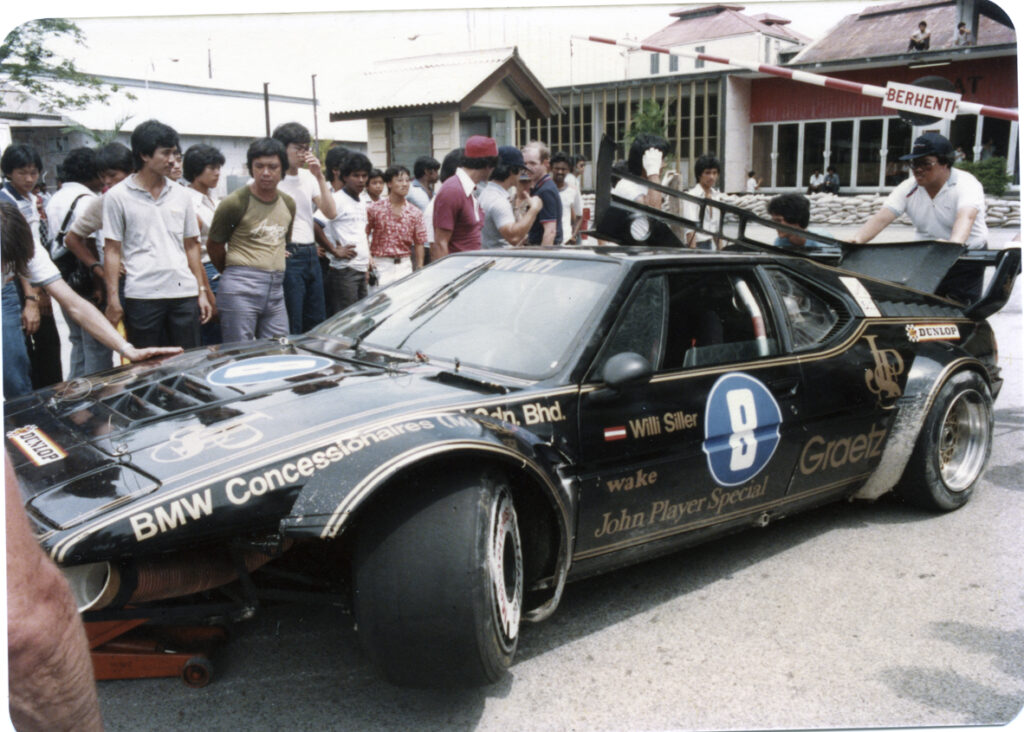
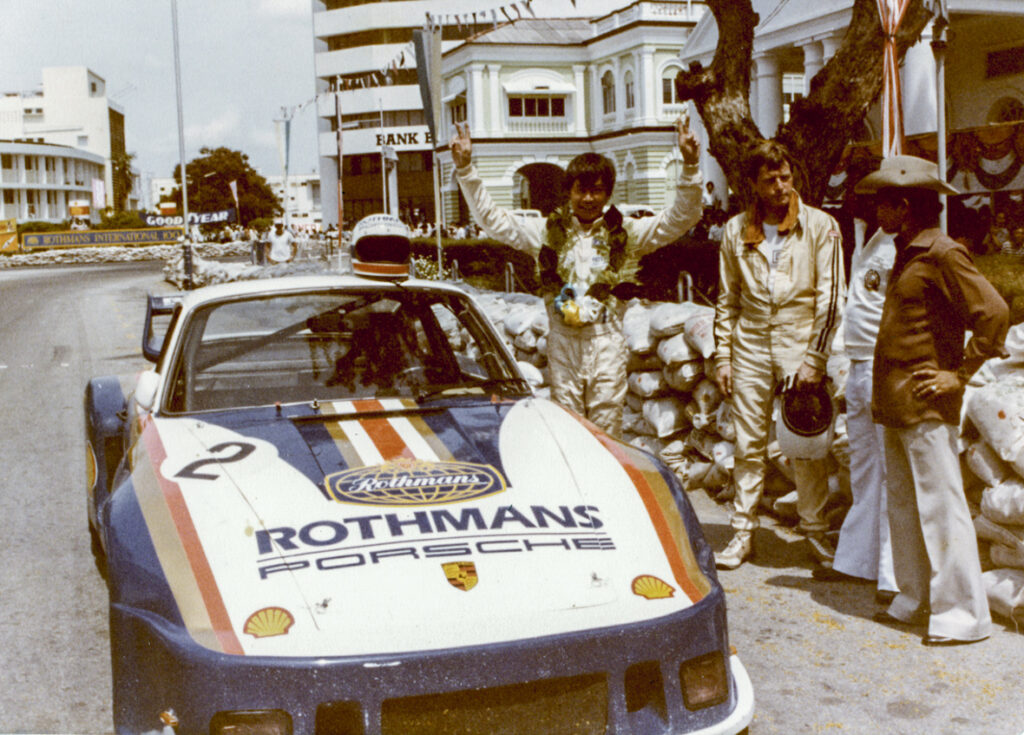
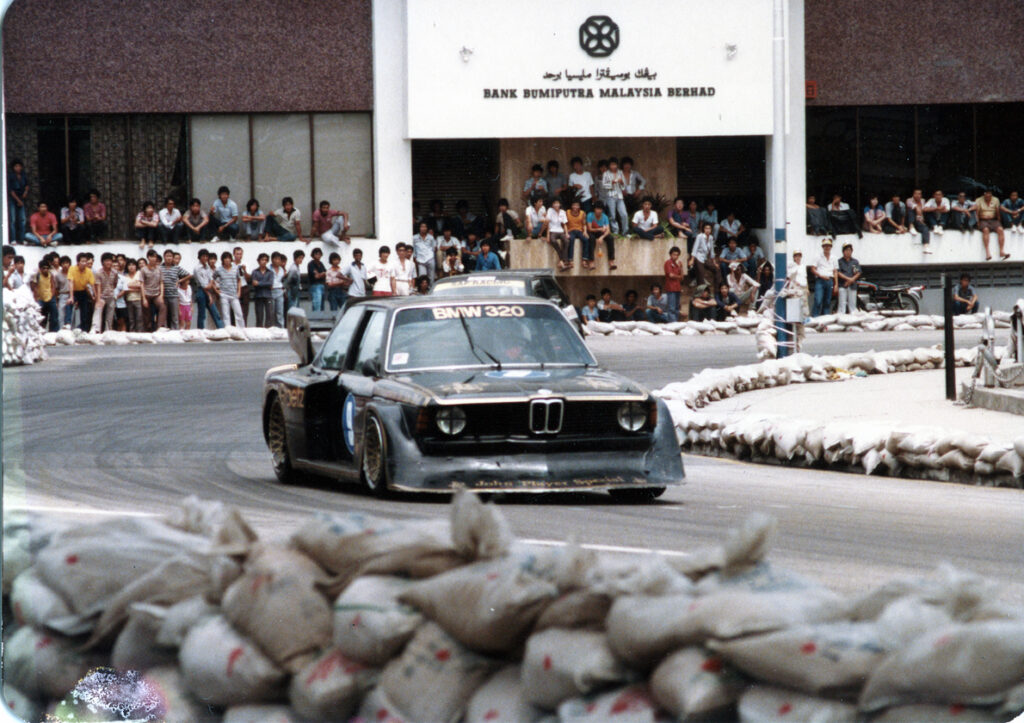
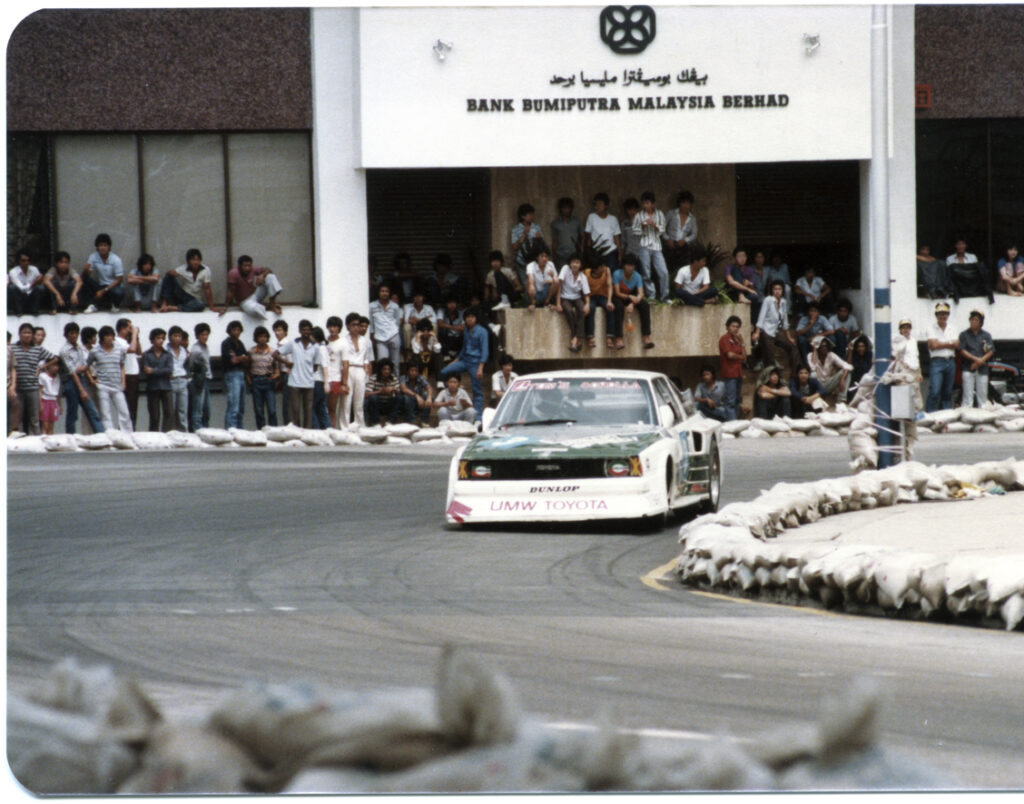
PIPE DREAMS: 1983 was indeed a bumper year for South East Asian racing with the Shah Alam circuit hosting four major race meetings. Customarily the Selangor Grand Prix would come after the Penang Grand Prix, usually in the fourth quarter of the year, but for 1983, The First Rothmans ASEAN Circuit Races preceded the Selangor Grand Prix. This new event was held over the 17-18 September weekend and was the culmination of the effort of the Race Officials Club of Malaysia and the Singapore Motor Sports Club. Backing for the event came from perennial supporter, Rothmans of Pall Mall (Malaysia). So did this ASEAN Circuit initiative take off throughout the region? As far as this author is aware, Malaysia aside, there was just the Indonesian ASEAN Circuit Race that was held on 8 July 1984. Getting around national import duties and taxes would have destroyed the resolve of the best of organisers. Still, it was a good effort but it wasn’t the first. Back in 1974, there was talk of a South East Asian Circuit of 11 races that included seven in Malaysia, two in the Philippines, one in Indonesia and one in Macau. Nada in Singapore where the sport was banned. When Rothmans stepped in, it morphed into the Rothmans Championships.
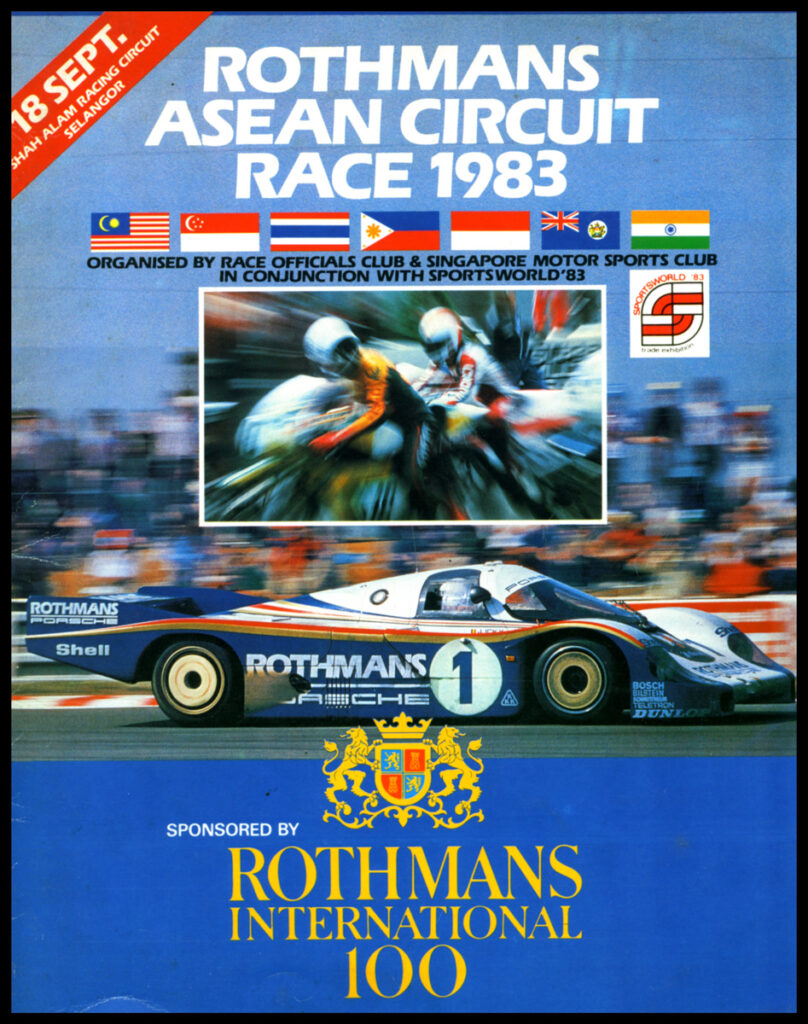
So what was the Rothmans ASEAN Circuit race meeting like? No single-seaters and a grid of Malaysian and Singapore enthusiasts. No Tachi, Misaki, Stuck, French, or even Adamczyk to claim all the podium places over the Malay Hari Raya holidays. But then again, the Super Saloons event was spectacularly popular, with 49 entries received by the time the race program went to print. That’s an enormous grid that required splitting up into different classes by capacity, possibly because of the unhealthy number of Minis entered and the disparity in speeds between these and the Gp5 Silhouettes. At the sharper end of the spectrum were the usual Super Saloon entrants – Tinton Suprapto in Nobuhide Tachi’s TOM’S 2-litre Corolla, Ian Grey in his JPS-BMW 320i, William Mei in the Gp5 Zapspeed Escort (the Gp2 car had relocated to Perth), and Louie Camus in the Celica-Elfin. Albert Anthony had tried to rope in Sonny Rajah and Harvey Yap to pilot the Zakspeed but both turned him down. There was also an interesting entry from Singapore in the 1601cc & Above class – Colin Syn in a Renault 5 Turbo 2.
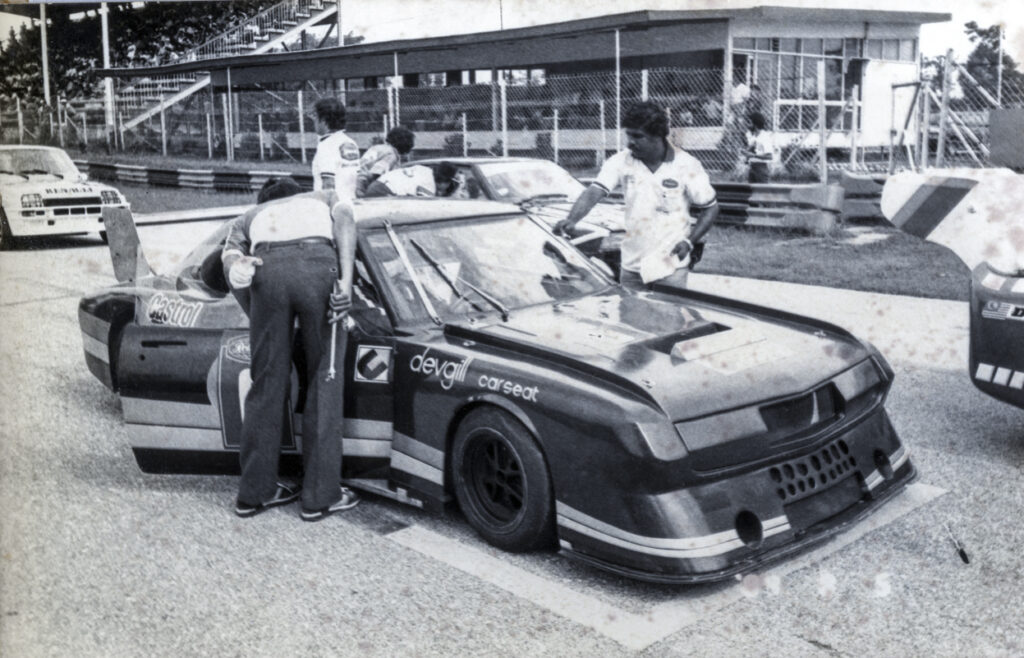
Andy Bryson won his 1300cc and under class in his well-known Davrian Imp Silhouette while the 1601cc and Above win (and overall win) went to Ian Grey in the JPS-BMW 320i with Indonesian Tinton Suprapto second in his #5 Toyota Corolla. Third was Louie Camus in his #61 Celica-Elfin Silhouette. Fortunately a few photos survive of this event. While this author has the official detailed results for the Super Saloons Up to 1300cc class, the full classification for the premier class is unobtanium. Should anyone have detailed results of the 1301cc and above classes, I am sure we’d all be delighted to see this.
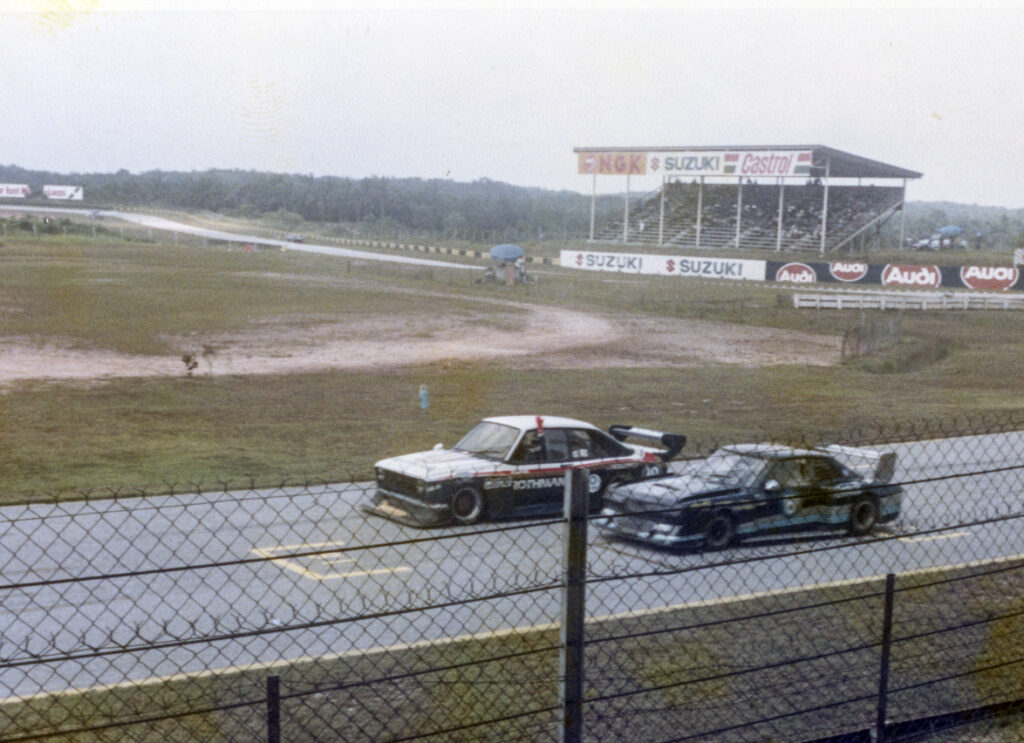
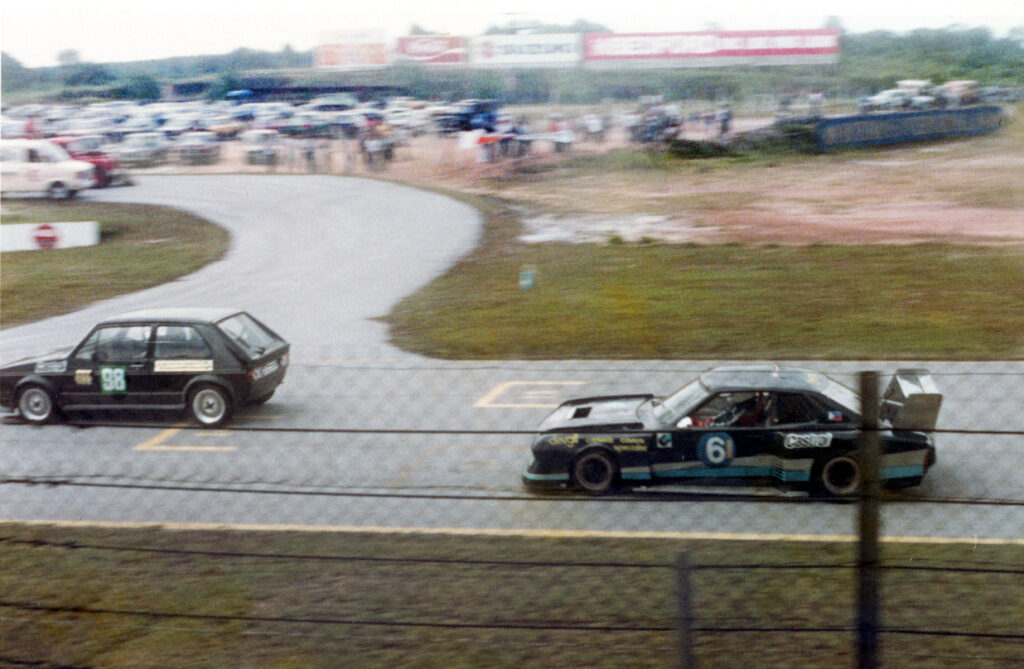
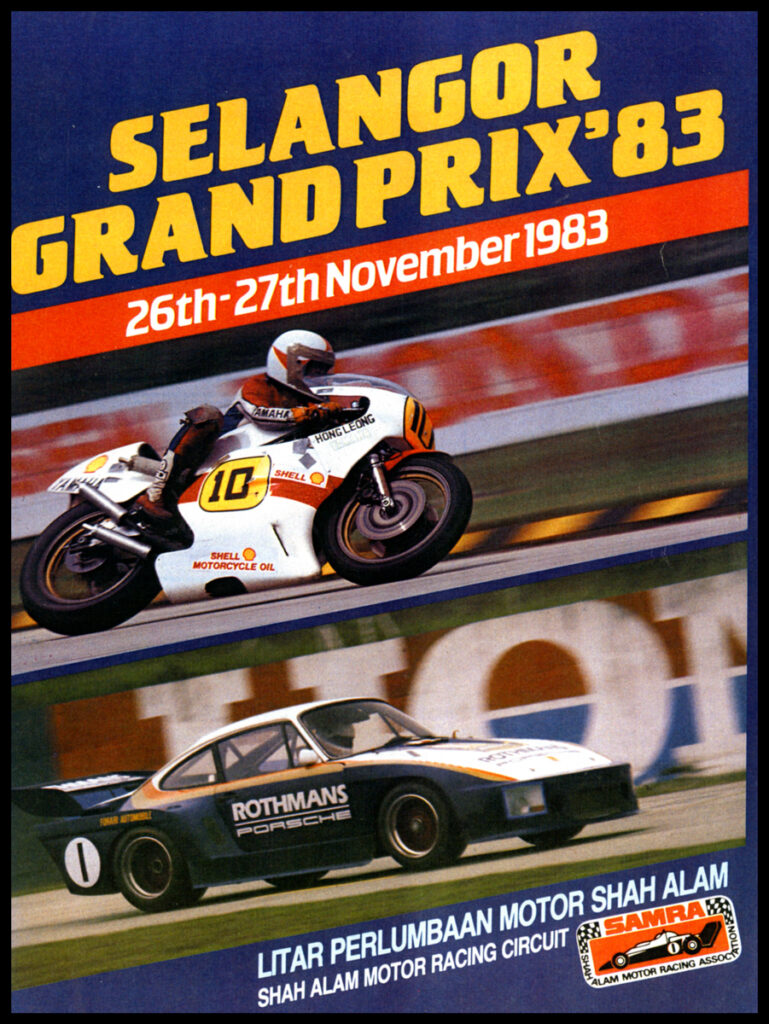
PREMIER CLASS: The Selangor Grand Prix was held over the 26-27 November weekend, the last big race weekend of the year and just over two and a half months following the Rothmans ASEAN Circuit Race. Hans-Joachim Stuck’s entry in the BMW M1 was only confirmed at the very last minute and that really put a nice spin on things because, up until then, the #1 Toyota Celica 2000 Turbo entry for Kaoru Hoshino was deemed a certain winner. But it’s never a done deal, is it? Why? For two very valid reasons. The first was that the Toyota’s Turbo engine was still experimental. Putting out 600hp on a dyno doesn’t equate to turbo power on delivery. The second reason was that there were nine members from a Western Australian tribe that had other ideas.
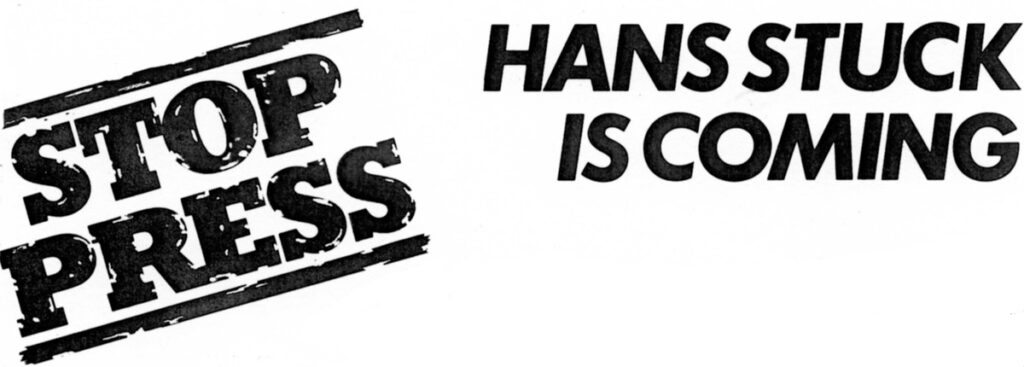
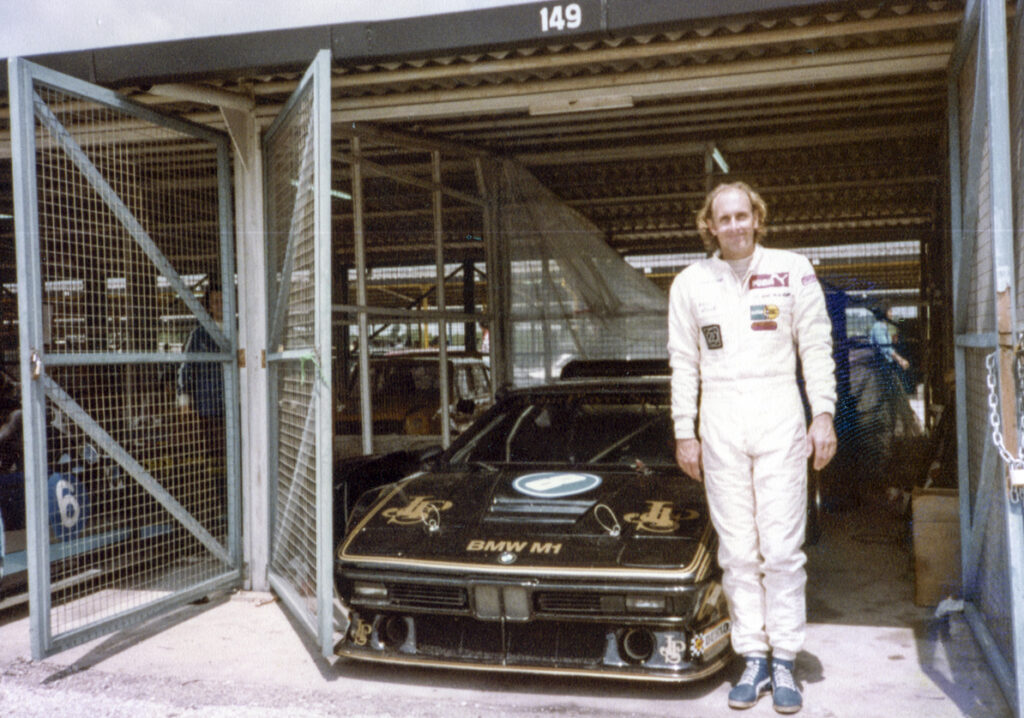
It had taken a year of preparation between the Shah Alam Motor Racing Association (SAMRA), Jeff Amin and Western Australian Sports Car Club’s Mike Mettam for the Australian contingent to race in Selangor in 1983. You’d be forgiven for thinking it was a race at Wanneroo. Dick Ward led the charge, and accompanying him were Gordon Stephenson, Les Verco, Rob Collins, Peter Finch, Mike Mettam, Mike Barnes, Murray Chapman and Bruce Peacock.
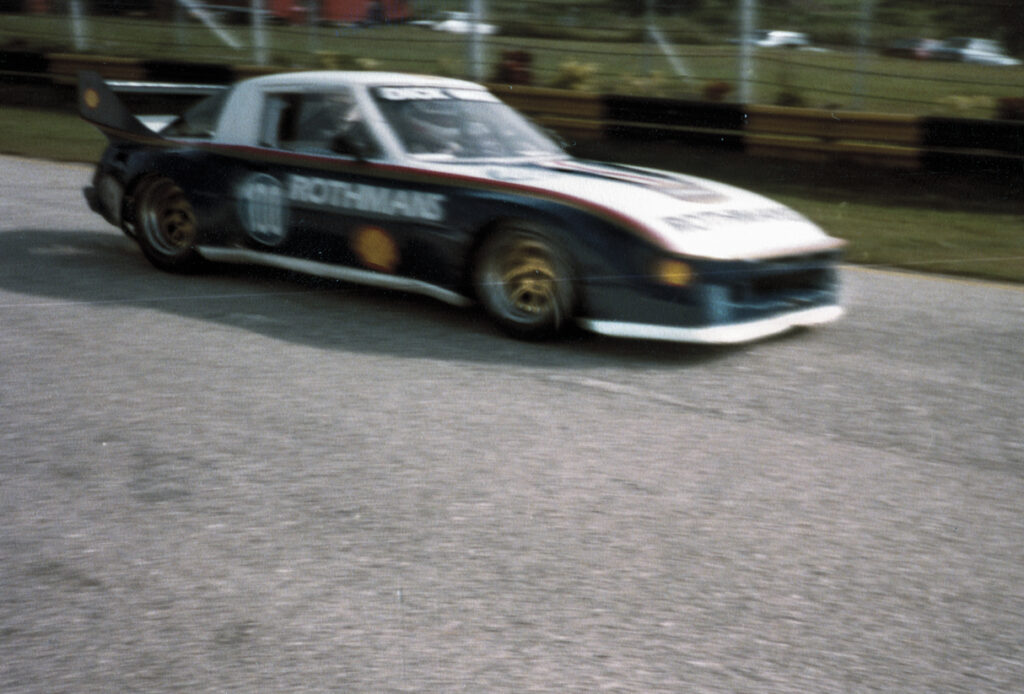
Dick Ward now had an RX7 Silhouette in place of his well-known Fiat Abarth. Gordon Stephenson had the ex-Finch Chevy Monaro with 5.7-litre V8 while Peter Finch had a Holden Torana V8. Mike Mettam arrived with the ex Ian Grey Gp2 Zakspeed Escort, now sporting a Rotary engine. Les Verco, a veteran racer, had a Mazda RX3 Rotary while Rob Collins had an extensively modified RX7. Murray Chapman had a Valient Charger and Mike Barnes had a Holden Torana Turbo. There were two entries that may not have materialised. First was Bruce Peacock in Volvo (listed as car #10) – a 242 GT Turbo, a Gp5 Super Saloon with interesting specifications. It had a space frame, fibreglass panels, a turbocharged Volvo 4-cylinder B21 motor, and put out 300bhp via its M45 Volvo transmission. The second was 36-year-old Japanese driver Taku Akaike, listed in the program with car #3, a Mazda RX7 ATTR 835A. Even less is known of that car.
A cursory look at the official race program and you’ll find Stuck’s name missing. Missing too was the #6 entry for Filipino Louie Camus and his Celica-Elfin Silhouette. So intent was Camus to participate in the Super Saloons race, he scratched his Chevron B34 entry in the single-seater Grand Prix to focus on getting the Celica ready for the two Super Saloon races that weekend.
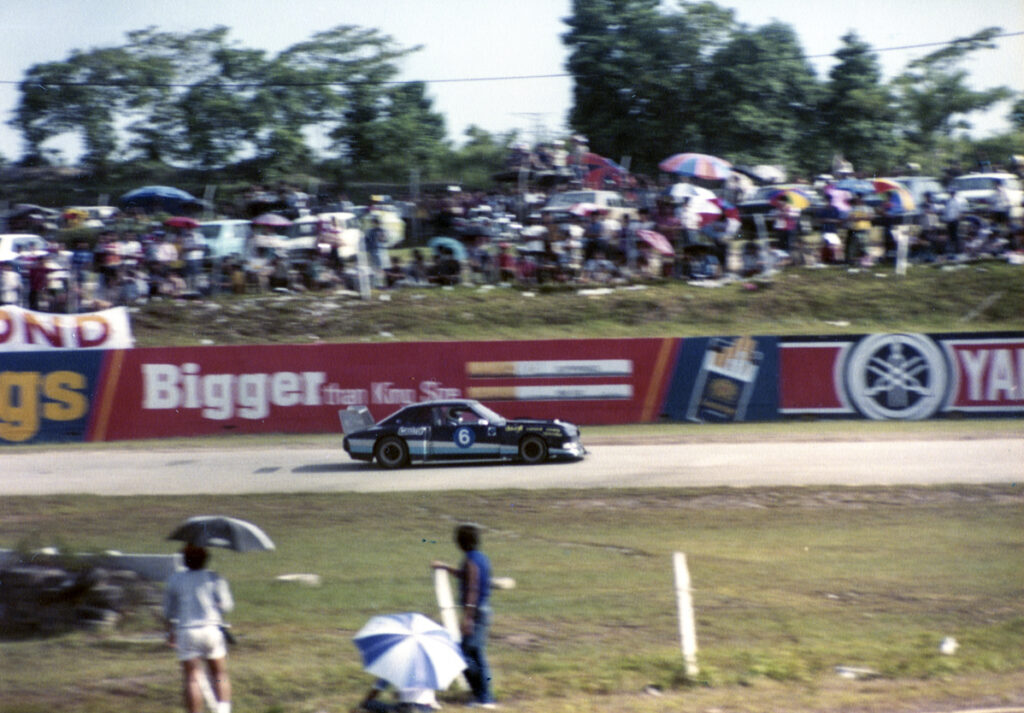
This was now the premier event for the Grand Prix but still as a single race on Saturday. The under 1301cc Super Saloons had a separate race. But things took a twist following Saturday’s race.
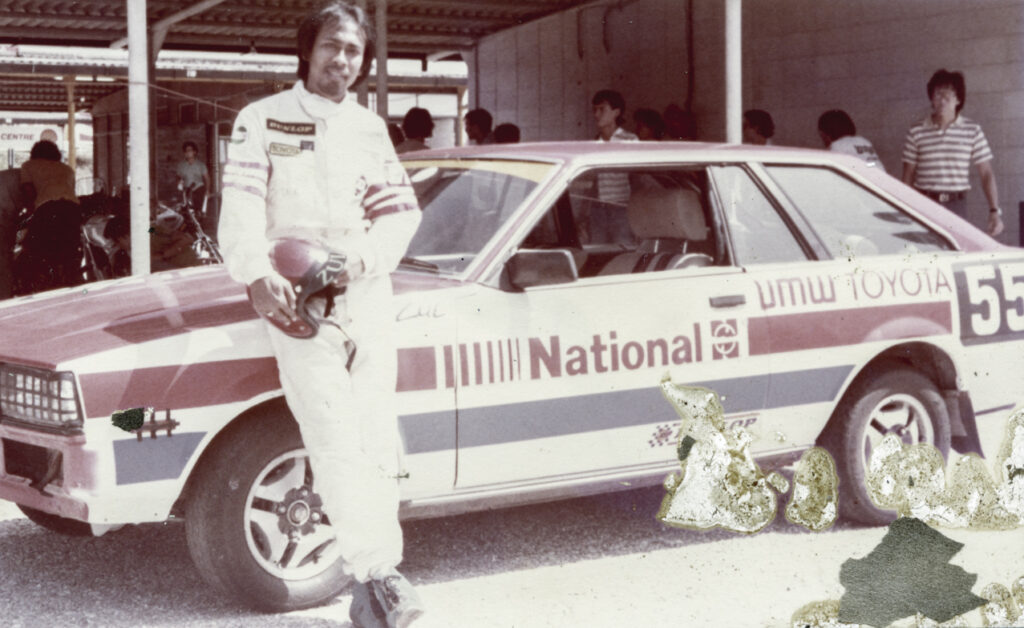
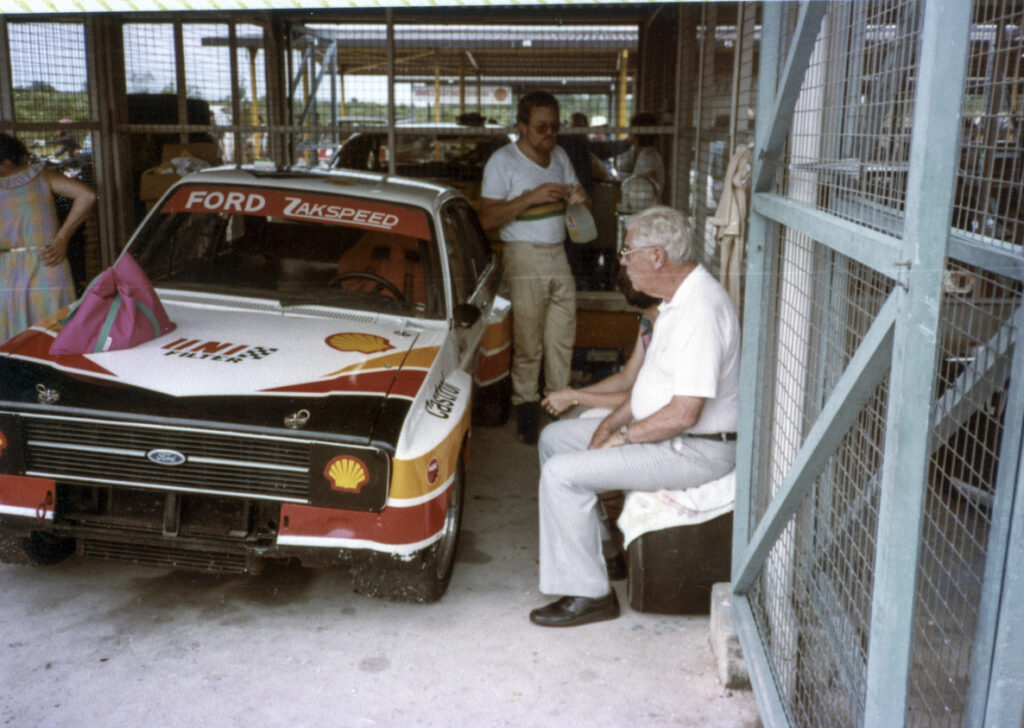
It was good to see the two Zakspeed Escorts on the grid together. The Gp5 car was now in the hands of Billy Mei, loaned from Ian Grey. The Gp2 Escort had left the Malay Peninsula for Perth in Western Australia but was now back for the weekend in the hands of then President of the Western Australian Sports Car Club, Mike Mettam. Gone was the BDA motor and in its place was a Mazda Rotary, which Mettam had run in the 1983 Australian WA Championships. Mettam also played a big part organising this adventure for the Western Australians. Dick Ward, well-known in Malaysian racing circles, continued to race his #100 Mazda RX7 and was expected to put up a good fight against the European cars. The other fancied Australians were Gordon Stephenson in a V8 Holden Monaro and Peter Finch in a V8 Holden Torana.
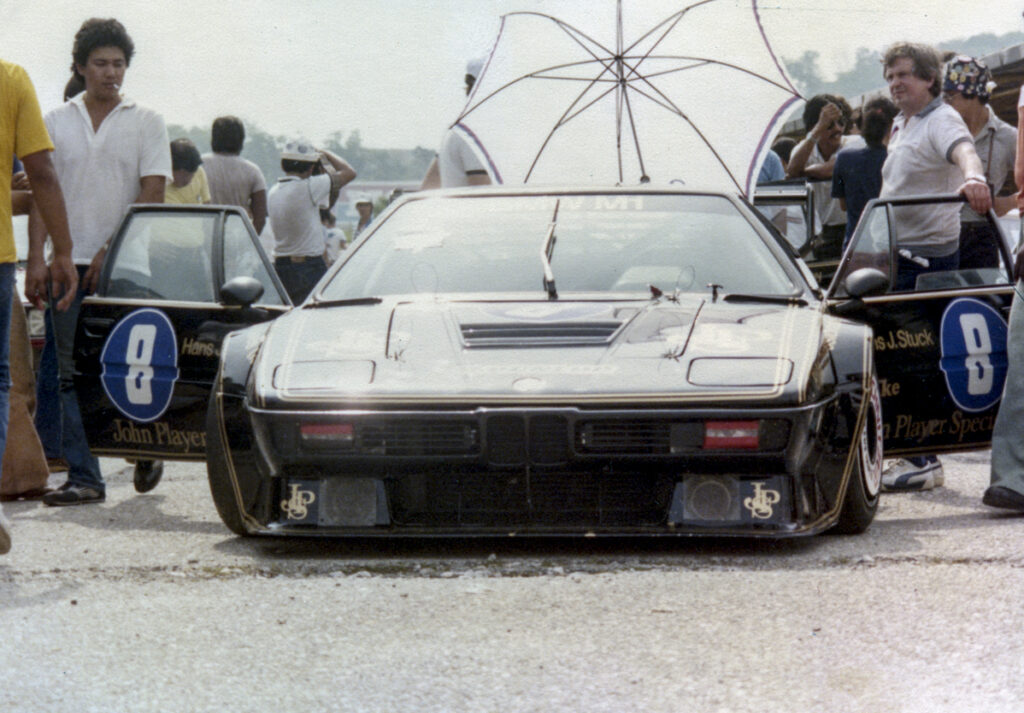
Then there was Hans-Joachim Stuck, back in Malaysia in the #8 BMW M1. Given previous performances, it was evident that Eddie Koay (PR and Advertising Manager of BMW Concessionaires) was on a good wicket with Stuck and the M1. It was great brand marketing – not just with the M1 but with Ian Grey’s 320i in Super Saloons and Kenny Lee’s BMW 535i in the Limited Formula races. Lee had made a name for himself, having quite rallying for road racing earlier and the 535i was way too fast for the RX3s and the lone RX7. The BMW shattered the Limited Formula lap record with a 1:34.
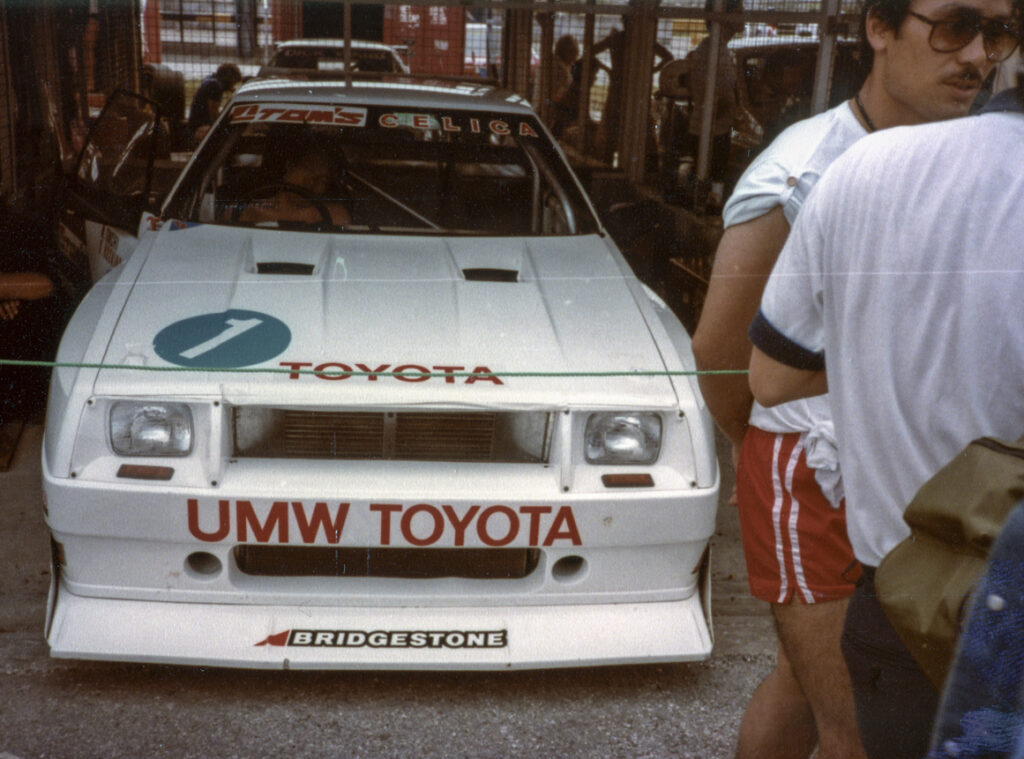
The customary Japanese entry came from Toyota’s Kaoru Hoshino, in a 2090cc 4T-GT Celica Turbo, a very powerful motor but with undesirable turbo lag around a tight street circuit. Susumu Koumi, TOM’S Team Manager, had yet to sort out the turbo lag and final drive ratios for Shah Alam but that would eventually change come the 1984 season.
WHY JUST HAVE ONE? In Race 8 the Stuck M1 ran away with the win, setting a fastest lap of 1:28.7, which was not as fast as his Qualifying blast of 1:23.9, wiping out Rusty French’s Malaysian Grand Prix lap record of 1:26.2. Dick Ward’s Qualifying time was 1:26.2. Ward finished second, Hoshino third, Stephenson fourth, Mettam fifth, Finch sixth, Mei seventh, Chapman eighth, Zul Hassan ninth and Rob Collins tenth.
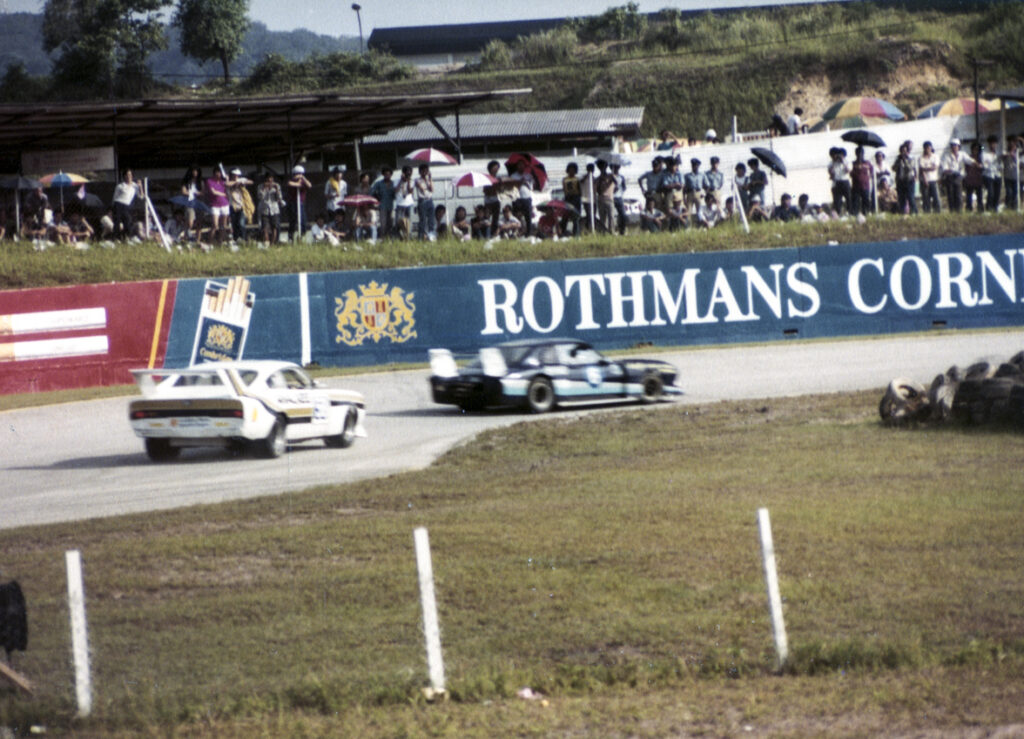
There was a lot of activity between officials and teams after Race 8 when the Australians sought a re-run on Sunday. Come all the way over for just a single race? Why not have two? BMW Concessionaires and the UMW-Toyota weren’t interested and pulled out of the re-run with Eddie Koay declaring that they did not have enough racing tyres or spares.
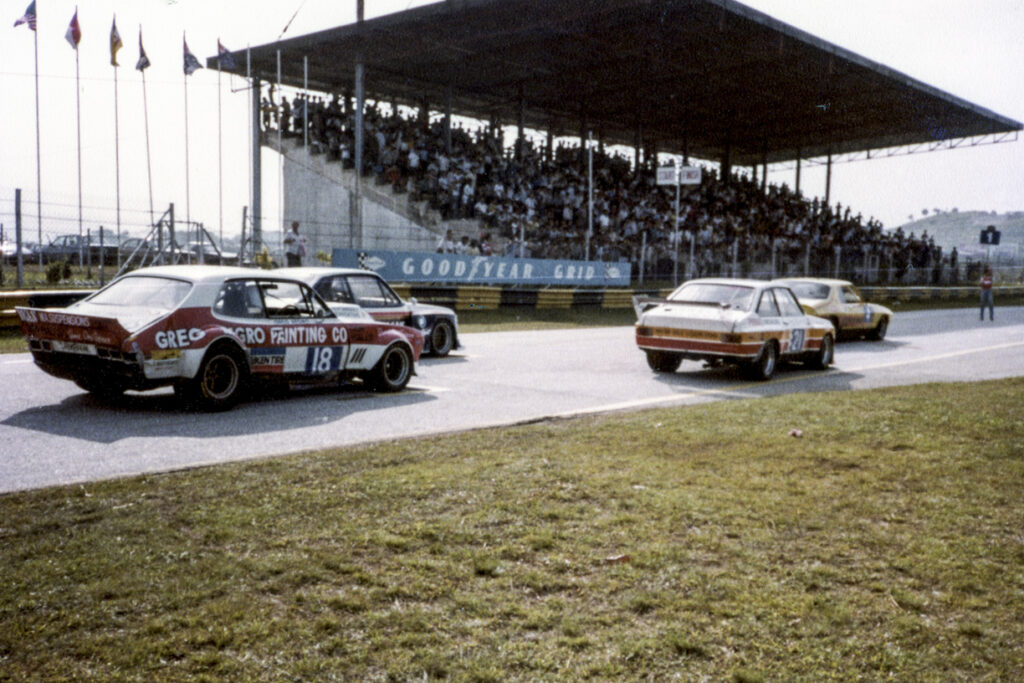
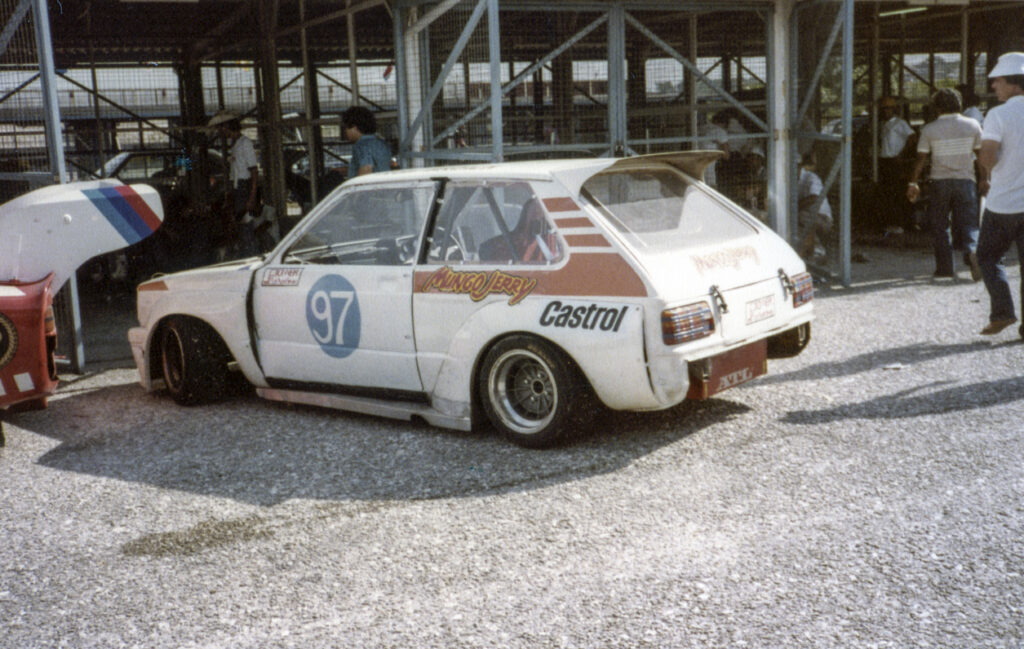
So Race 18 on Sunday would be an Australian show, led by Ward with a spectacular 1:24.9 second lap of the 20-lap race. Ward won, ahead of Mike Mettam, Peter Finch, Gordon Stephenson, Robert Collins, Ron Brown (Toyota Starlet), Murray Chapman, Les Verco, Louie Camus and Richard Sim. The author has left the details within the photo captions from both the races that weekend.
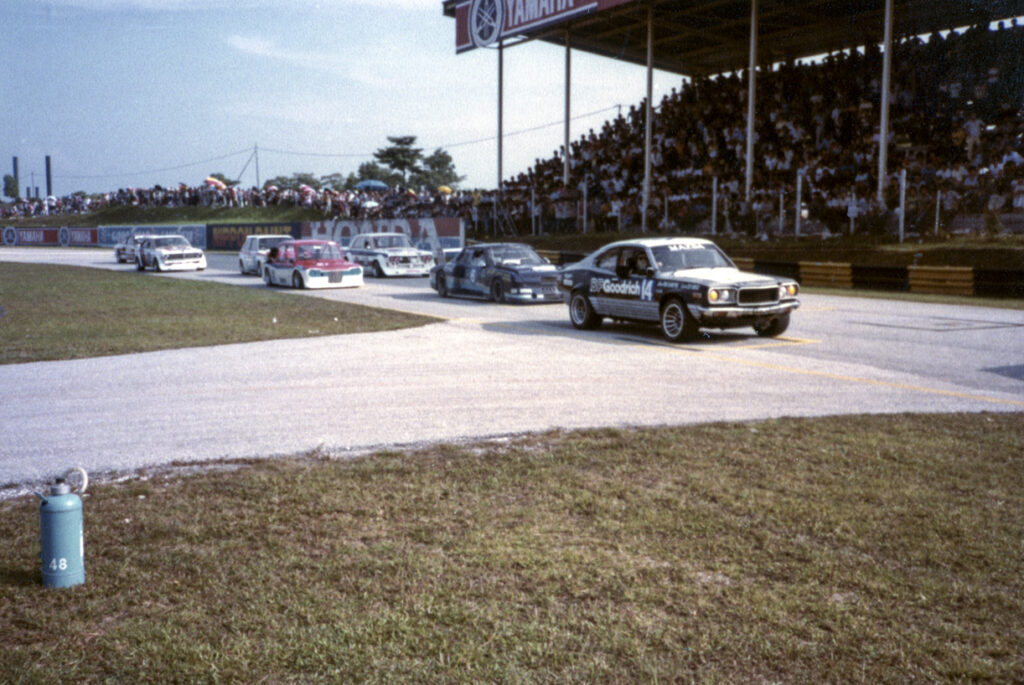
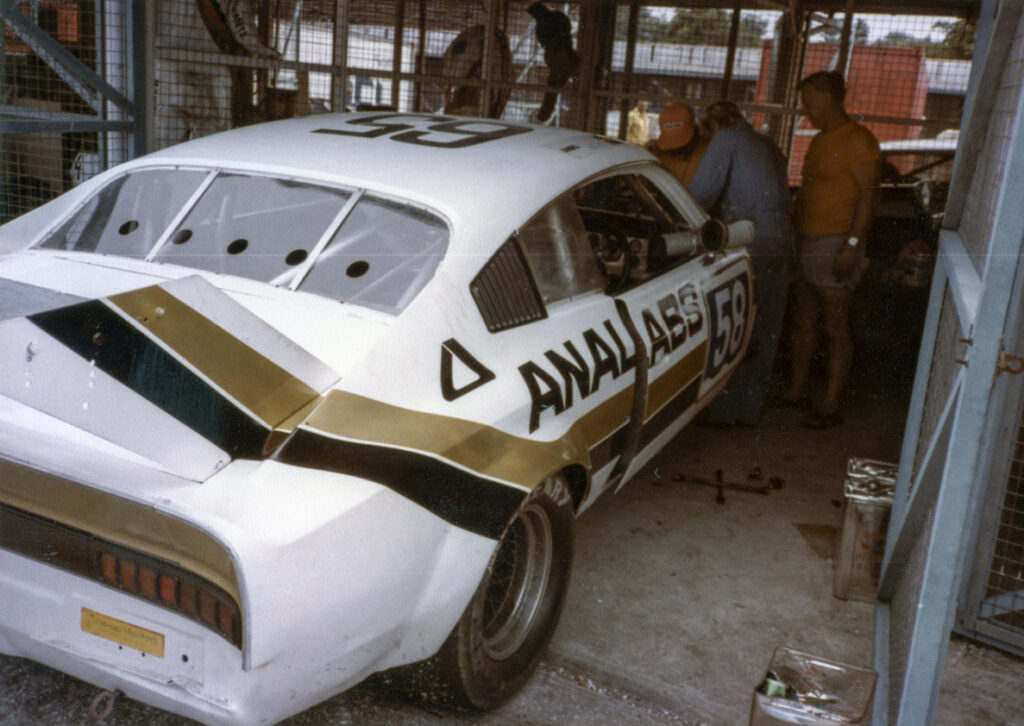
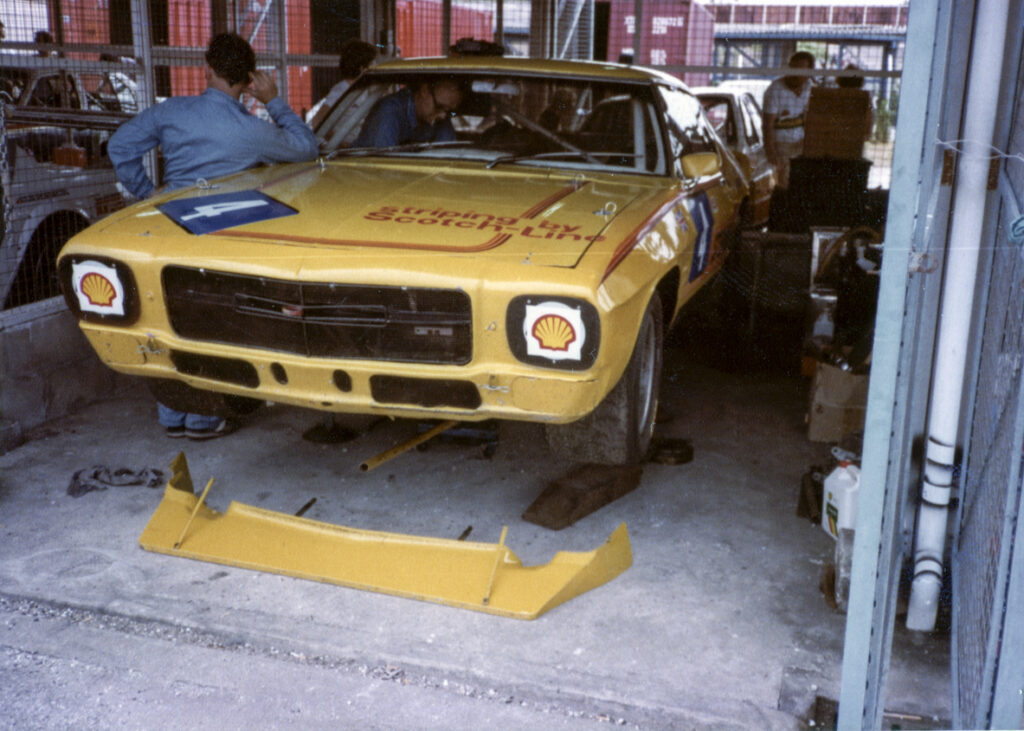
That’s it for the 1983 Malaysian Super Saloon season. In our next Friday Feature Fix we’ll feature the 1984 season.
With Special Thanks to the following for use of their collections: Herbert Adamczyk, Louie Camus, Eddie Koay, Harvey Yap, Albert Anthony, Zul Hassan, Greg Broughton & Henry Oorjitham.
This author will be the first to admit that this is the work of a rank amateur without journalistic or scholastic credentials. It barely scratches the surface of what was a very important and interesting period of saloon car racing in the Far East. It is hoped that these articles bring back good memories and help, in some small way, fill the gaps in Asia’s motor sports history.
For more on Eddie Koay – see REMEMBERING ERIC & EDDIE

